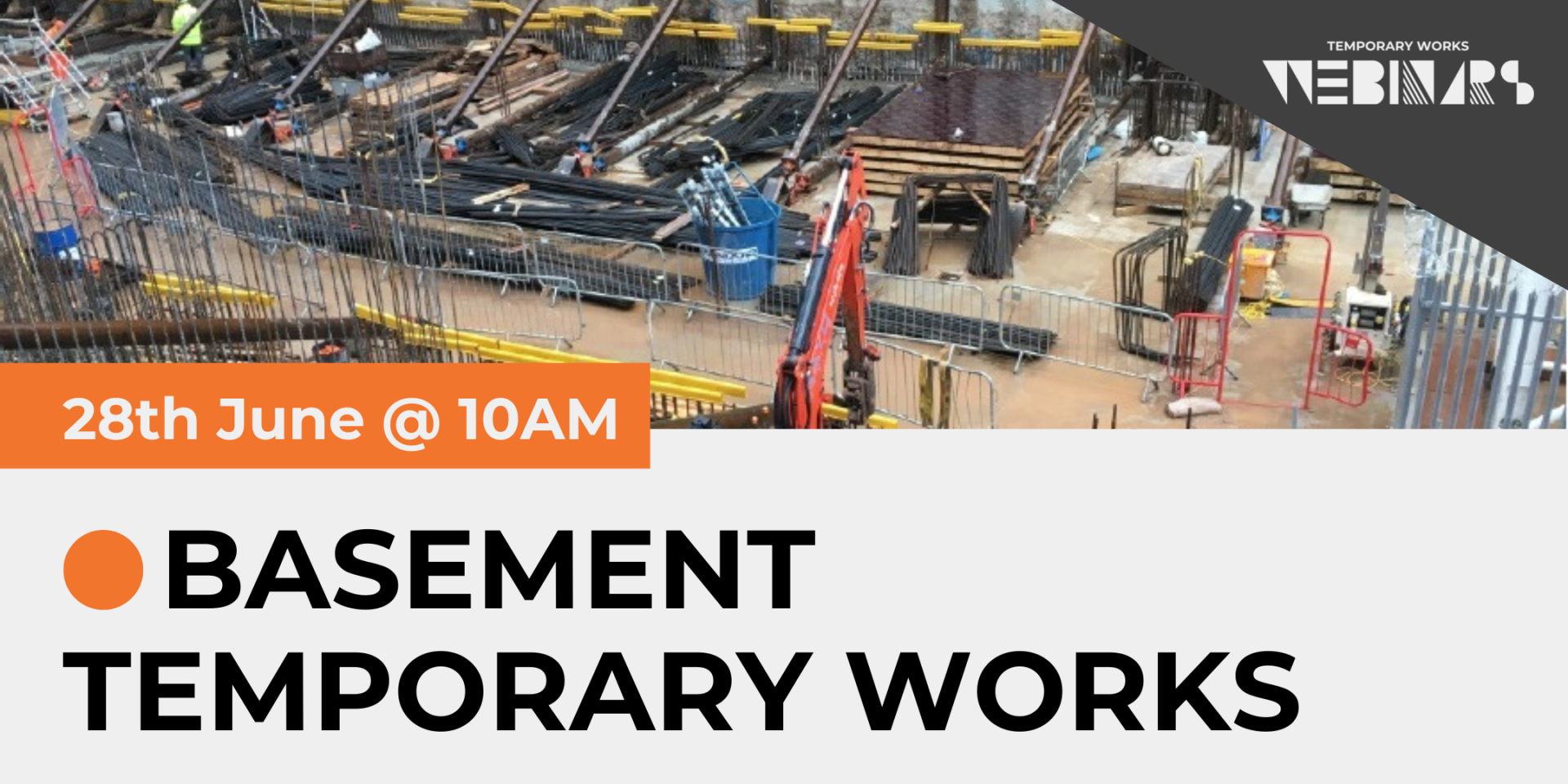
Overview of the essential aspects of Basement Temporary Works engineering.
This CPD webinar recording examines the types of temporary works required for basement schemes and the engineering factors that need to be considered and mitigated.
Elements of Basement Temporary Works Discussed
- Varied and High-Risk Construction: The process is dependent on existing structures and often involves risks due to proximity to roads, buildings, and underground services.
- Unknown Ground Conditions: There are many unknowns below ground that can affect construction and require investigation
- Multiple Disciplines and Coordination: Basement construction involves various contractors and disciplines working simultaneously, requiring careful coordination.
- Temporary Works and Load Transfers: Temporary structures and their load transfers need careful planning and consideration for stability throughout the construction phases.
- Water and Hydrostatic Pressure: High water tables and hydrostatic pressure on retaining walls can present significant challenges.
The webinar’s examples and case studies highlight both successful and problematic basement projects. For instance, a well-engineered basement with proper support systems in a domestic building contrasts with another that suffered structural failures due to inadequate support.
Basement Temporary Works Case Studies
Keybridge House: This project required complex solutions to manage the demolition of existing structures and the installation of new ones within constrained spaces. It involved using vertical props, raking props, and flying shores to manage the loads effectively.
Landmark Manchester: The project exemplified how early involvement and good site investigation can lead to efficient construction methodologies. Detailed planning and using existing structures where possible reduced the need for extensive temporary works.
General Recommendations:
- Early engineering input and thorough site investigation can significantly reduce risks and improve project efficiency.
- Collaborative efforts among project teams lead to better outcomes.
- Understanding the sequence of construction and the interplay between temporary and permanent structures is crucial.
Resources for Further Knowledge:
- I-Structe’s Temporary Works Toolkit.
- CIRIA’s C517 and C740
- Temporary Works: Principles of design and construction

